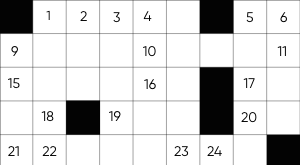

Each entry includes the base or bare infinitive first, followed by the simple past (V2) form and the past participle (V3) form. See how you do on the irregular verb quiz below-and please, no peeking at the answers till you complete the last question. This list contains all the irregular verbs of the English language.

This is why these words can create havoc for conscientious speakers of English. Proper use of irregular verbs requires old-fashioned memorization-there are no secret formulas or shortcuts. "The ten commonest verbs in English ( be, have, do, say, make, go, take, come, see, and get) are all irregular," notes Steven Pinker, an American experimental psychologist and linguist, "and about 70% of the time we use a verb, it is an irregular verb." Pinker acknowledges 180 irregular English verbs, but there is an online Extended Irregular Verb Dictionary which contains over 470 irregular verbs, including rare ones such as bestrew, enwind, and hagride. There are far fewer irregular verbs than regular ones, but we use them all the time. But the simple past form, if it differs from the participle, cannot function as an adjective: a broke dish is substandard English. The past participle of an irregular verb can also function as an adjective: a broken dish. Be careful never to add a helping verb to the simple past form of an irregular verb- I have broke your dish is an embarrassing confession in more ways than one. The compound verb have broken is so called because we've added a helping verb ( have) to the main verb's past participle ( broken). We use the past participle, broken, to form compound verbs in sentences like I have broken your dish. The simple past tense is broke, which we use in sentences like I broke your dish. Let's get back to the irregular verb break. And then there are a few really weird ones, like go: its past participle ( gone) is recognizable enough, but its simple past tense is a strange new word ( went). Still others, like break and sing, change to form the past tense ( broke, sang) and change again to form the past participle ( broken, sung). Others, like feel and teach, become modified versions of themselves ( felt, taught) to form both the past tense and the past participle. Some irregular verbs, like let, shut, and spread, never change, whether present or past. They form the simple past tense and the past participle in any number of unpredictable ways. A regular verb's simple past tense and past participle are always identical. We call a verb regular when we add ed ( want ed, look ed) or sometimes just d ( create d, love d) to form what are called the simple past tense and the past participle (see third and fourth paragraphs below). Spanish has quite a few verbs with irregular past participles.English verbs are either regular or irregular. There are seven perfect tenses in Spanish, and all of them use the past participle. For the conditional, use the same stems but with different endings! Irregulars in the Perfect Tenses Click here for a list of the irregular simple future forms. When learning all the different tenses in Spanish, learners are often pleased to find out that the future and conditional have the same irregular stems. Irregulars in the Future and Conditional Tenses

forms of verbs list of verb forms in English, English verbs,100 most common English verbs, verbs: basic forms, verbs in English, English verb conjugation, complete English irregular verb list,v1 v2 v3 v4 English grammar,1000 verbs,200 verbs in English, ea English verbs, verbs forms, learn. The irregular verbs ser, ir, dar, and ver Verbs are the only kind of word in English that can be modified to indicate past or present tense.Click on this link to learn verbs with tricky preterite conjugations, including: The imperfect has only three verbs with irregular conjugations: ir, ser, and ver while the preterite has many more. Spanish has two simple past tenses: imperfect and preterite. Irregular present tense verbs fall into various categories: The easiest way to memorize irregular verbs in Spanish is to group them into categories. While it can be difficult to remember hundreds of irregular verb forms, we have multiple guides to help you with the most common ones. All Spanish tenses have regular and irregular verbs.


 0 kommentar(er)
0 kommentar(er)
